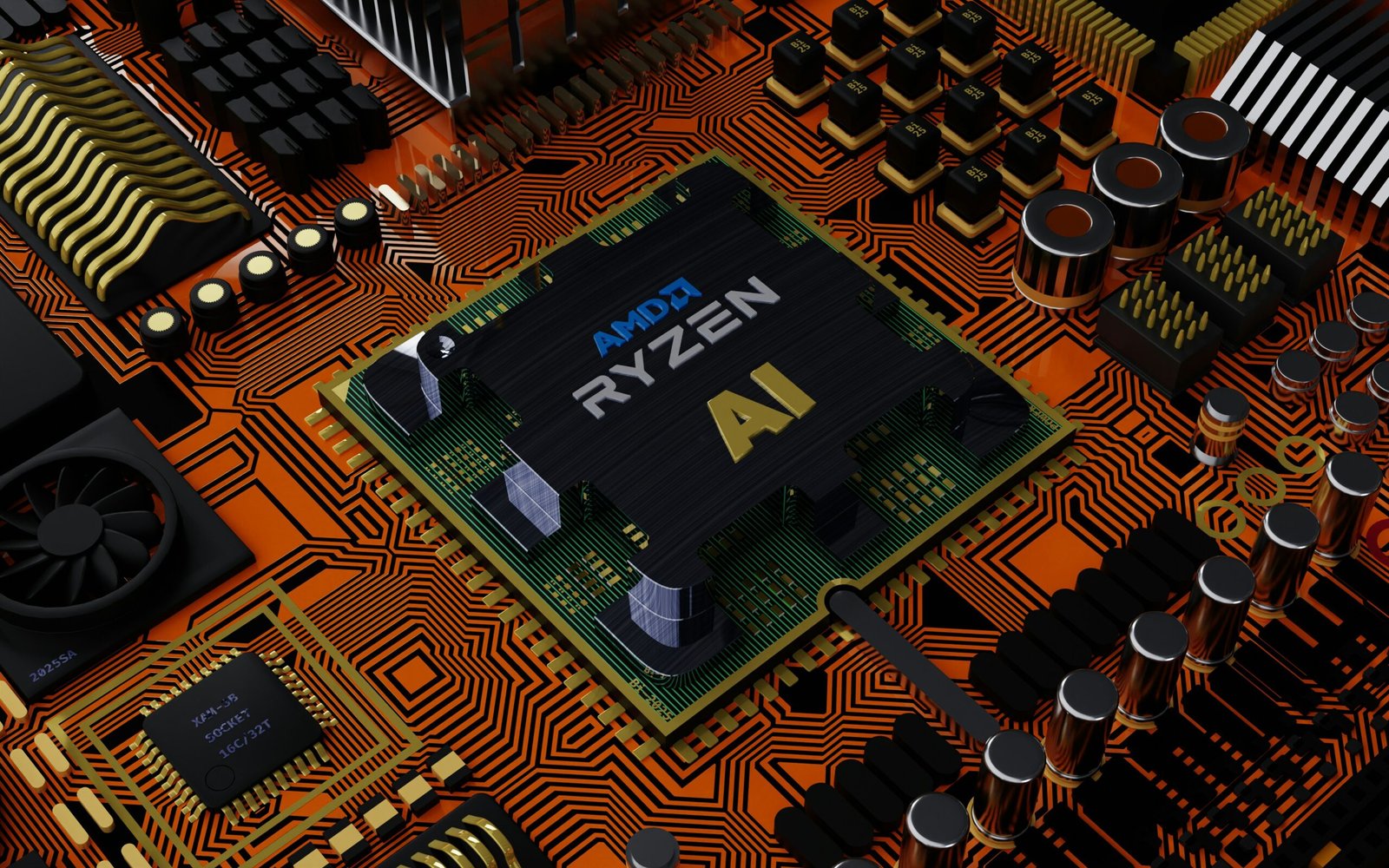Edge Computing Explained: How It Enhances Performance and Reduces Latency
 Photo by BoliviaInteligente on Unsplash
Photo by BoliviaInteligente on Unsplash Introduction to Edge Computing
Edge computing represents a paradigm shift in how data is processed and utilized, fundamentally differing from traditional cloud computing. At its core, edge computing involves processing data closer to where it is generated, rather than relying exclusively on centralized data centers. This proximity to data sources significantly enhances the speed and efficiency of data processing, reducing both latency and bandwidth usage.
In traditional cloud computing, data must travel from the user to a centralized data center for processing, often located far from the source of the data. This can result in considerable delays, especially for applications requiring real-time processing. In contrast, edge computing processes data at or near the source, which can be a device, local server, or nearby data hub. This decentralized approach ensures quicker data processing and minimizes latency, making it particularly critical for real-time applications like autonomous vehicles, smart grids, and industrial IoT systems.
The rise of the Internet of Things (IoT) and the increasing demand for instantaneous data processing underscore the growing importance of edge computing. IoT devices generate an immense volume of data, often requiring immediate analysis to function effectively. For instance, in healthcare, wearable devices need to provide real-time health metrics to monitor and respond promptly to patient needs. Similarly, in smart cities, sensors must instantly relay data to manage traffic flow and energy consumption.
Moreover, edge computing enhances performance by alleviating the burden on central cloud infrastructures. By distributing the processing load, it not only improves efficiency but also ensures better utilization of network resources. This shift is crucial as the amount of data generated continues to grow exponentially, driven by advances in machine learning, artificial intelligence, and connected devices.
In essence, edge computing stands as a pivotal innovation in today’s digital landscape, offering a robust solution to the latency and bandwidth challenges posed by traditional cloud computing models. As we move towards a more interconnected world, understanding and implementing edge computing will be vital for sustaining the performance and real-time responsiveness of emerging technologies.
The Architecture of Edge Computing
Edge computing represents a transformative approach in managing and processing data across the digital ecosystem. Its architecture is composed of several integral components that work in unison to enhance performance and reduce latency. The primary elements involved in the edge computing framework include edge devices, edge servers, and the cloud. These components are strategically arranged to balance data processing between the edge and centralized cloud infrastructures.
Edge devices, also known as edge nodes, are the entry points for data collection. They are typically located close to the data sources, such as IoT sensors, user smartphones, or industrial machines. These devices are equipped with processing capabilities that can analyze and filter data locally, thus reducing the volume of raw data that needs to be transmitted to distant servers.
Edge servers, another critical component, act as intermediaries between edge devices and the cloud. Positioned closer to the edge devices, often at local data centers or even within the same geographical area as the devices, edge servers handle more substantial processing tasks that edge devices are unable to perform. They aggregate data from multiple edge nodes, perform significant computations, and ensure that only relevant, transformed data reaches the cloud.
The cloud, while generally physically distant from the user and the data sources, plays a pivotal role in the broader architecture of edge computing. It provides robust storage capabilities, advanced analytics, and long-term data processing that edge devices and servers may not have the capacity to handle. The cloud also serves as a central repository, ensuring data synchronization and coherency across the entire network.
This hierarchical distribution of processing workloads – from edge devices aggregating raw data, through edge servers managing intermediate computations, to the cloud performing complex analyses – exemplifies the efficient flow of data. By processing data closer to the source, edge computing reduces latency, minimizes bandwidth usage, and enhances real-time responsiveness. Such strategic deployment of edge nodes not only optimizes performance but also empowers quicker decision-making and more agile operations in various sectors.
Benefits of Edge Computing
Edge computing provides numerous advantages that are revolutionizing various industries. One of the most significant benefits is improved performance. By processing data closer to where it is generated, edge computing reduces the distance that data must travel, thereby accelerating data processing times. This proximity substantially lowers latency, enabling real-time data analytics and decision-making capabilities essential for applications like autonomous vehicles, smart grids, and industrial automation.
Another noteworthy benefit is better bandwidth efficiency. Traditional centralized cloud computing often necessitates transmitting large amounts of data over long distances, consuming considerable bandwidth. Edge computing mitigates this by processing data locally and only sending essential information to the central servers. This not only alleviates network congestion but also leads to more efficient use of available bandwidth resources.
Security and privacy are other critical aspects that edge computing addresses effectively. By handling sensitive data locally, there’s a reduced need to transmit such information across networks, which minimizes the risk of interception or data breaches during transit. Additionally, localized data processing allows for more stringent security measures tailored to specific operational environments, thereby enhancing the overall security posture.
The financial implications of edge computing are also noteworthy. Reduced data transfer means lower operational costs associated with data transmission. Additionally, the decentralized nature of data processing enhances system reliability by reducing the single points of failure inherent in centralized systems. This decentralization ensures that even if one node fails, the rest of the network can continue functioning seamlessly, thereby improving the overall reliability and uptime.
In summary, edge computing offers a myriad of benefits, including improved performance, reduced latency, enhanced bandwidth efficiency, stronger security and privacy measures, and significant cost savings. Its capacity to process data closer to the source not only optimizes network and processing capabilities but also fortifies the overall system architecture against potential security threats and operational failures.
How Edge Computing Enhances Performance
Edge computing significantly enhances system performance by processing data closer to the source. This proximity greatly diminishes the time required for data to travel back and forth to a central server, a factor known as latency. The reduction in latency results in swifter data processing, which is crucial in numerous high-stakes applications and industries.
By decentralizing data processing, edge computing mitigates the delays traditionally associated with cloud computing. In typical cloud architectures, data from end devices must traverse long distances to reach data centers, which can introduce delays and reduce responsiveness. Edge computing reallocates these tasks to local nodes or devices at the edge of the network. This strategic placement allows for rapid data analysis and decision-making almost instantaneously, as opposed to several milliseconds or seconds later.
One prominent example of edge computing enhancing performance can be seen in autonomous vehicles. These vehicles require real-time data processing for safe and efficient navigation. With edge computing, the processing and analysis of sensory data from cameras, LIDAR, and other inputs occur directly within the vehicle or nearby infrastructure, enabling rapid response to dynamic driving conditions without the lag of distant server communication.
Similarly, smart grids benefit immensely from edge computing. These energy systems rely on real-time monitoring and control to ensure efficient distribution and consumption of power. By processing data at the edge, smart grids can quickly adapt to fluctuating demand and supply dynamics, thereby maintaining stability and reducing the risk of outages. This decentralized approach facilitates the swift aggregation and analysis of data from numerous sensors distributed across the grid, enhancing overall system performance.
In essence, edge computing stands as a transformative approach to handling data at unprecedented speeds and efficiency, aligning well with the operational exigencies of contemporary technological landscapes.
Latency Reduction with Edge Computing
In the landscape of modern computing, latency has become a significant concern, especially for real-time communication and decision-making processes. Latency, which refers to the delay between a user’s action and a web application’s response, can severely impact the quality of experience in various applications. For instance, in real-time applications such as live video streaming or remote surgery, even a millisecond delay can lead to substantial issues, ranging from degraded user experience to potentially life-threatening situations.
Edge computing addresses these challenges by positioning computation and data storage closer to the data source. Traditional cloud computing models involve data traveling long distances to centralized data centers, adding several milliseconds of delay. In contrast, edge computing facilitates data processing at or near the data source, thereby minimizing latency and optimizing performance.
One practical example of latency reduction through edge computing can be observed in live video streaming services. Typically, video frames are captured, processed, and transmitted to viewers with minimal delay. In a conventional cloud computing setup, this entire process would involve multiple hops to and from distant data centers, causing noticeable latency. However, with edge computing, the video data processing occurs closer to end-users, significantly reducing the time delay and allowing for almost real-time streaming.
Moreover, in the realm of remote healthcare, particularly remote surgery, latency reduction is crucial. Surgeons require real-time feedback from robotic surgical equipment to perform precise and delicate operations. Any delay could compromise the success of the surgery. Edge computing enables medical data to be processed locally, thereby minimizing latency and ensuring real-time responsiveness, which is critical for patient safety and surgical accuracy.
By decreasing the physical distance that data must travel, edge computing effectively reduces latency, enhancing the performance of applications relying on real-time communication and decision-making. This paradigm shift not only enhances user experience but also opens new possibilities for latency-sensitive applications.
Edge Computing Use Cases
Edge computing has rapidly transformed numerous industries by enabling data processing closer to the data source, significantly reducing latency and enhancing performance. Several sectors have adopted edge computing solutions to improve their operational efficiency and service delivery. This section highlights prominent use cases across key industries, including healthcare, manufacturing, retail, and smart cities.
Healthcare
In the healthcare sector, edge computing is revolutionizing patient care and medical services. One pertinent application is in remote patient monitoring. By using edge devices to process data locally, clinicians can obtain real-time insights into patient health metrics without relying on cloud computing. This allows for quicker, more informed decision-making and immediate medical interventions. Edge computing also facilitates enhanced diagnostic imaging processes, whereby high-resolution images are processed at the source, improving clarity and speed.
Manufacturing
Manufacturing has also benefited substantially from edge computing, particularly through predictive maintenance and quality control. Predictive maintenance involves leveraging local analytics on data collected from machinery sensors to predict equipment failures before they occur. This proactive approach helps to reduce downtime and maintenance costs. Additionally, edge computing supports real-time quality control, enabling manufacturers to promptly identify and address defects during the production process, thus ensuring higher product quality and efficiency.
Retail
In the retail industry, edge computing enhances the customer shopping experience and operational efficiency. Retailers use edge devices for real-time inventory management, ensuring that stock levels are accurately tracked and replenished as needed. Enhanced augmented reality (AR) and virtual reality (VR) experiences provided via localized data processing offer customers immersive shopping experiences, from virtual try-ons to interactive store displays. Edge computing also supports personalized marketing strategies by analyzing consumer behavior on-site, allowing for timely and tailored promotions.
Smart Cities
Smart cities leverage edge computing to improve urban living and infrastructure management. Traffic management systems utilize real-time data processing to monitor and control traffic flow, reduce congestion, and enhance public safety. By integrating edge computing into surveillance systems, cities can achieve faster response times to incidents and more efficient resource allocation. Furthermore, smart utilities like energy grids and water management benefit from localized data analytics, leading to optimized resource distribution and reduced wastage.
Through its varied applications in healthcare, manufacturing, retail, and smart cities, edge computing demonstrates its capacity to drive innovation, enhance performance, and reduce latency across diverse domains.
Challenges in Implementing Edge Computing
While edge computing promises significant benefits in enhancing performance and reducing latency, it is not without its challenges. One of the primary concerns is security. With data being processed closer to the edge, it introduces multiple points of vulnerability. Traditional centralized models have robust security measures in place, whereas decentralized edge environments may lack equivalent protection, making them susceptible to cyberattacks and data breaches.
The complexity of management also presents a considerable hurdle. Managing a distributed network of edge devices requires robust infrastructure and sophisticated tools to ensure seamless operation. Organizations need to implement comprehensive monitoring, maintenance, and updates across a diverse and widespread network of devices, which can be resource-intensive and challenging.
Additionally, the adoption of edge computing necessitates the development of new skillsets within organizations. IT personnel need to be adept at handling edge-specific technologies and methodologies, which may require significant training and upskilling. This transition may pose a barrier to smaller organizations with limited resources.
There are trade-offs to consider between centralized and decentralized data processing. Centralized models offer easier control, consistent security measures, and simplified data management. In contrast, decentralized edge computing provides reduced latency and improved performance by processing data closer to its source. Organizations must balance these trade-offs, considering factors such as their specific use cases, data sensitivity, and infrastructure capabilities, before adopting edge computing solutions.
The Future of Edge Computing
As we look ahead, the future of edge computing appears promising, driven by rapid advancements in technology and the increasing need for efficient data processing. One of the most significant trends is the integration of 5G networks, which is poised to dramatically improve the capabilities of edge computing. The low latency and high bandwidth of 5G will enable quicker data transmission, enhancing real-time processing and decision-making capabilities. This will be particularly beneficial for applications in the Internet of Things (IoT), autonomous vehicles, and smart cities.
Artificial Intelligence (AI) will also play a pivotal role in the evolution of edge computing. By deploying AI algorithms at the edge, devices can process data locally, leading to faster and more intelligent systems. This localized processing reduces the dependency on centralized data centers, improving efficiency and reducing latency. For instance, AI-powered edge devices can analyze data in real time to detect anomalies, optimize performance, and even predict maintenance needs before issues arise. These advancements will facilitate the development of more autonomous systems, streamlining operations across various sectors.
Additionally, edge computing will drive the advancement of smart infrastructures. As urban areas increasingly adopt smart technologies, edge computing will provide the necessary processing power to manage the vast amounts of data generated by interconnected devices and sensors. From traffic management to energy grid optimization, edge computing will enable more responsive and adaptive systems, contributing to the creation of smarter, more sustainable cities.
Another exciting development is the potential for edge computing to revolutionize the healthcare industry. With the rise of remote patient monitoring and telemedicine, edge computing can enable real-time analysis of patient data, leading to more timely and accurate diagnoses and treatments. Furthermore, the security and privacy benefits of edge computing, through localized data processing, will be critical in safeguarding sensitive healthcare information.
Overall, the future of edge computing is intertwined with the progress of emerging technologies. As 5G, AI, and IoT devices continue to evolve, edge computing will become increasingly integral in shaping the digital landscape. Its ability to enhance performance, reduce latency, and enable real-time processing will unlock new possibilities across various industries, driving innovation and efficiency in unprecedented ways.



Tidak ada komentar